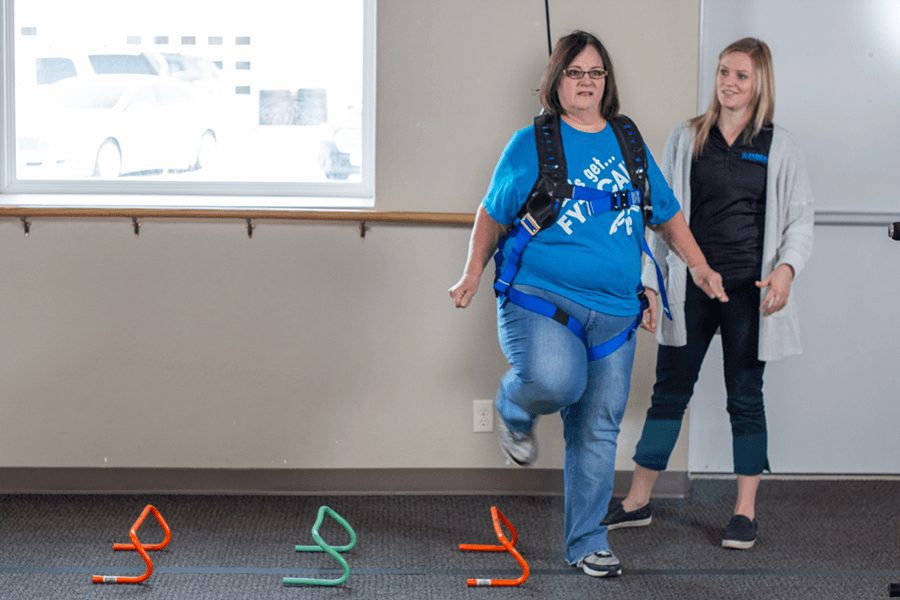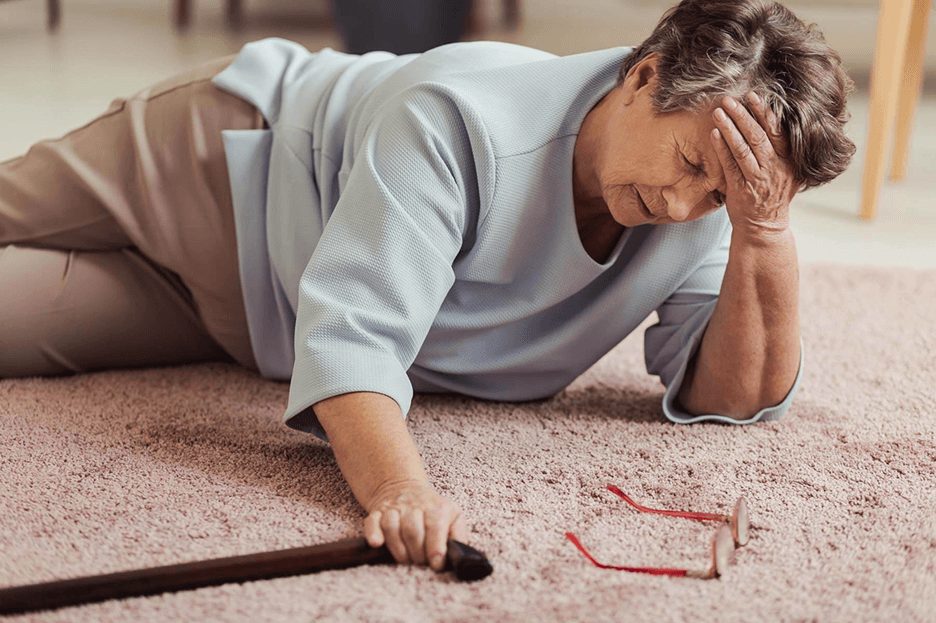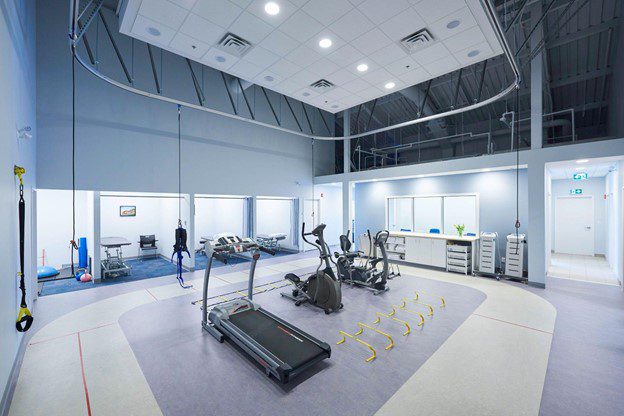Physical Therapy Fall Prevention: Your Guide to Prevent Patient Falls

Falls and a fear of falling can diminish your patient’s ability to lead a full life. A fall may result in a loss of independence, decreased ability to perform tasks or hobbies, or even injury. Physical therapy can benefit patients who need to improve their balance, muscle strength, and endurance. Physical therapy can help your patients lower their fall risk while increasing their strength, balance, and endurance.
According to the Centers for Disease Control and Prevention (CDC), over one in four older adults report a fall yearly. In 2021, 38,742 older adults aged 65 and older died from preventable falls, and nearly 2.9 million were treated in emergency departments. Staying proactive and increasing your patients’ balance, strength, and endurance is extremely important for preventing accidental falls. As a physical therapist, you should be able to assess your patient’s risk factors and help your patients remain independent. You should be able to:
- Design a personalized plan for your patient’s specific fall-prevention needs.
- Help the patient make their home as safe as possible.
- Educate your patients about medical risk factors related to falls.
- Teach your patients appropriate strength and balance-training exercises.
- Recommend appropriate community programs to help the patient maintain their strength and balance.
What Are Falls?

A fall is any event that leads to unplanned, unexpected contact with a supporting surface, like a piece of furniture or the floor, which is not the result of an injury, shove, or medical event such as a heart attack or fainting spell.
A near-fall is a stumble or loss of balance that would result in a fall if your patient were unable to catch themself.
Some factors that can increase your patient’s risk of falls include:
- A history of previous falls.
- Advanced age.
- Leg weakness.
- Medical conditions like heart disease, stroke, Parkinson’s disease, or Alzheimer’s disease.
- Taking too many, or certain types of medications.
- Getting dizzy when they stand up from sitting or lying down.
- Home hazards like rugs, poor lighting, or a lack of handrails on stairs or in the bathroom.
- A recent hospital stay.
- Trouble with their memory and thinking.
- Depression or anxiety.
- Being in overall poor health.
- A sedentary lifestyle.
- Becoming fatigued easily.
- Problems with vision or touch sensation.
- Unsuitable footwear.
- Joint pain.
- Arthritis.
- Improper use of a walker or cane.
The more risk factors your patient has, the greater their risk of falling.
How To Diagnose A Fall-Risk Patient

Patients should be screened by their primary care provider every year to help determine their risk for falling. Your patient may have:
- A fear of falling.
- Had a loss of balance.
- Recently fallen.
As a physical therapist, you can conduct a brief screening of your patient’s fall risk by asking them a few simple questions. You can also conduct tests to assess the patient’s:
- Balance.
- Ability to get around.
- Leg strength.
If the patient screening shows that the patient is at risk for falling, you will perform a thorough evaluation, including:
- A review of the patient’s medical history and any medications.
- A check of the patient’s heart rate and blood pressure measurements at rest and while they changed positions (from sitting or lying to standing).
- An assessment of your patient’s balance, strength, and walking ability.
- A simple vision test.
- An assessment of the patient’s feet and footwear.
- A home safety assessment.
Patient Treatment

Based on the evaluation results, you will design a plan for your patients that is tailored to their specific needs. The treatment plan may include:
Balance Training
Balance training is the most important and effective part of falls prevention. As a physical therapist, it is your job to safely guide the patient through exercises that challenge their ability to keep balance. Balance exercises are designed to help the patient recover from a loss of balance.
Walking and Moving
Walking is a popular physical activity. However, if your patient has poor balance, a walking program can increase their risk of falling. Ensure a walking program is a safe and effective option for your patient.
Doing Multiple Things at Once – Safely
Older adults who have difficulty walking and talking at the same time have a higher risk of falling. To increase their safety during daily activities, you may design a training program that will challenge them to maintain standing and walking while they do another task. An example would be walking or standing while counting backward, having a conversation, or carrying a bag of groceries.
Strength Training
Strengthening is a key element of fall prevention when combined with balance exercises. You may design a personalized strengthening program that focuses on specific muscle groups. This program should be aimed at improving the patient’s standing balance, their balance while walking, and their ability to recover from a loss of balance.
Pain Management
Certain exercises, like strengthening and aerobic exercises, can help relieve pain in addition to decreasing their fall risk. Research has shown that physical therapy can help people reduce or eliminate their need for pain medication, including opioids.
Education
Take the time and explain to your patient how they can best manage their risks of falling. Some helpful resources you can share with your patients include:
- Falls Prevention for Older Adults from the National Council on Aging
- STEADI – Older Adult Fall Prevention from the Centers for Disease Control and Prevention
- Fall Prevention Center of Excellence from Homemods.org
Fear Management
Your patients may struggle with a fear of falling. It is important to be patient with them while helping them build their confidence. Start small and work their way up to more challenging exercises.
If your patient struggles with a fear of falling, providing fall prevention equipment like the Solo-Step Fall Prevention overhead track and harness system may be beneficial for your facility. The Solo-Step overhead track and harness system helps your patients:
- Decrease their fear of falling.
- Increase their confidence during therapy.
- Challenge themselves during more advanced therapy.
- Participate in a variety of balance, strength, and gait exercises.
- Use a variety of different pieces of equipment.

Personal Recommendations
You may provide your patients with personal recommendations based on their condition and the goals they are trying to achieve:
- Increase the safety of their home environment by making changes, such as removing throw rugs or clutter.
- Adjust how they complete their daily tasks to reduce their fall risk.
- Recommendations for appropriate footwear.
- Suggestions for proper nutrition and how to improve their sleep schedule.
- Recommendations for other health care providers if appropriate.
To learn more about the Solo-Step Overhead Track and Harness System and how it helps prevent patient falls, click the button below!